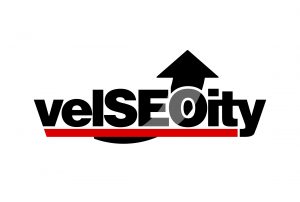Links, links, links – anchor text, anchor text, anchor text….
So, what is anchor text and how do you choose it when link building. This article gives you the low down on anchor text, what it is, how to choose it and the different types of anchors you can utilise when building links to rank your site.
So, without further ado….
What is an anchor text?
Am anchor text is basically the clickable text in a hyperlink. It is up to a user to come up with an anchor text and connect a hyperlink to it. When you dive into the world of anchor texts, one will discover various types of anchor texts including exact match anchor texts, generic anchor texts, naked anchors, partial-match anchor texts and many more. Making mistakes while dealing with anchor texts is very common.
Why is an anchor text important?
You cannot simply attach links made with random text to different pages on your website or create repeated instances of exact match anchor to your site. This is because Google’s algorithmic enforcer called Penguin is very strict and is known to destroy businesses all the time. This is why anchor texts are important.
So unless you want to invite the wrath of Google’s algorithmic enforcer, you’d better not create a ton of links to your website with exact matching anchor texts such as:
• Best inflatable banana website
• Inflating Bananas
• Banana Inflation Tips
Importance of Anchor Text For SEO
Google knows that a website with the above anchors is likely to have artificial links pointing to it. Typically, website anchors are made up of generic anchors (e.g., visit this life-changing website), naked URLs (e.g., hamsterjuggalos.com), or brand anchors (e.g., HamsterJuggalos).
Google determines the subject matter of a website by analyzing the text surrounding a link’s anchor, as well as the anchor text itself. Creating numerous exact match anchors for your site is a surefire way to alert Google that you are attempting to manipulate its algorithms or simply game the system.
What is Anchor Text Keyword Density?
Anchor text keyword density (ATKD) is a metric that can influence search engine rankings by measuring the frequency of specific words within linked texts of specific lengths.
To calculate ATKD, count the number of times a keyword appears in anchor text variations and divide it by the total number of words in the linked text.
ATKD can be calculated using this formula: (number of words/ link length) * 100 = percent occurrence for every 100 words.
ATKD is used to determine how often particular terms or phrases are used on individual pages or across an entire website and is used to determine search engine rankings for specific keyword phrases.
What Can Anchor Text Variation Do?
The use of anchor text variation can have numerous effects on SEO efforts. These include enhancing click-through rates, boosting traffic levels, increasing content visibility among social media users by encouraging more shares, and providing supplementary information about the linked page.
Why Is It Important to Mix Your Anchor Text?
Mixing the types of anchor text used is crucial for SEO success in addition to maintaining a high ratio of anchor text variation. Doing so can prevent keyword stuffing and enhance the ranking of your website in search engine results pages (SERPs).
Tips for Proper Anchor Text Usage
If you have control over the anchor text used for your content, there are a few tips to keep in mind to ensure proper usage. However, if you don’t have control over the anchor text, there’s not much you can do. If you are able to choose your own anchor text, it’s important to be methodical and organized.
You’ll be methodical
But if you find yourself feeling too lazy to be methodical, it’s better to be conservative at first. When it comes to using highly targeted anchor text, it’s best to wait until your website is already ranking but needs an extra boost. For instance, if you have a website about hamster juggling that is stuck in position three for “hamster juggling”, you might consider using a powerful long-tail anchor such as “learn how to juggle hamsters”.
Here’s a helpful tip for link building: save your targeted anchors for your most powerful links to get the best results.
Overall
To optimize your anchor distribution, it’s recommended that you emulate the patterns of other sites within your niche, considering that some niches have more competitive anchor profiles than others.
Cars.com is likely to have numerous backlinks that include the word “cars” in their anchor, but this doesn’t necessarily indicate over-optimization. In reality, it just signifies that the brand has a keyword in its name (“cars”), and since there are limited synonyms for the word “car,” it is a common choice for anchor text. However, I personally would love to see the term “horseless carriage” make a comeback.
12 Types of Anchor Text
Okay, now that we have established what an anchor text is, why it’s crucial for link building campaigns, and how anchor text is commonly used in SEO, let’s take a look at some of the various kinds of anchor texts that exist.
Natural Anchor Text Distribution
Natural anchor text distribution will vary depending on the page(s) on your website, but is commonly distributed similar to the above.
1. Branded Anchors
A branded anchor is an anchor that includes your brand name. For instance:
• Home Depot
• Amazon
• Google.com
Used in an example, it would look like:
‘branded anchor text’
Branded anchors are extremely powerful and safe. The only issue is that you are not always guaranteed to secure them when you need them for link building.
Publishers are not so fond of branded keywords because they are too conspicuous. You need a good justification to use a branded anchor because it could easily disrupt the flow of an article.
2. WebsiteName.com
The purpose of using this anchor text variation is to promote your own website and indicate to visitors that it is the origin of the content they are viewing.
Although using this anchor text variation can have long-term benefits for search engine rankings and website traffic levels, it is important to avoid overusing it. Overuse can create a spammy environment that may cause users to become frustrated with the content on your website.
3. Generic Anchor Text (CTA Anchor)
A generic anchor text variation refers to a hyperlink that does not include a specific keyword, such as “read more” or “click here”.
These types of anchor texts are often used to enhance the readability of the content and prevent excessive optimization of keywords, while still contributing to the improvement of search engine rankings.
CTA or generic anchor text is designed to encourage the user to click on a hyperlink by using a call-to-action phrase. Some examples of such phrases include:
• Try this
• Check out this page
• Go here
• Visit today
• Buy here
Used in an example, it would look like this:
‘call to action anchor text’
Generic CTA anchor texts should be used together with a compelling call-to-action for best results. They don’t offer a lot of brand relevancy, but help to provide clients with a clear way forward.
4. Page Title Anchor Text
A page title anchor is a variation that utilizes the main title or topic of your article.
This type of anchor text should be used with caution as it can be easily viewed as over-optimization resulting in you being penalized by search engines if you don’t use them correctly like other types.
5. Naked Anchors or Full URL
A naked link anchor text is basically an anchor text that is comprised of a raw URL. Some examples include:
VelSEOity.com (could also be considered “branded anchor text”)
Used in an example, it would look like this:
‘naked anchor text’
In the early days of the internet, naked anchors were quite common, as not everyone was familiar with anchor text. However, with anchors becoming more prevalent, naked anchors are now rarely used. (Our company is one of the few exceptions where naked anchors are still used since our brand name and domain name are identical.)
6. Brand + Keyword Anchors
You’ll often find scenarios where an anchor text utilizes a combination of the target keyword and your brand name. Some examples include:
• velseoity.com link building tactics
• Link building by velseoity.com
• velseoity.com link building services
Used in an example, it would appear like this:
‘brand and keyword anchor text’
7. Exact Match Anchors
The gold standard of the industry for anchors is an exact match anchor. Prior to the Penguin update in 2012, this was the anchor that everyone used to leverage. While overusing it today is not advisable, it still has a time and place.
If your keyword is “link building service,” it would look like this:
‘exact match anchor text’
8. Partial Match Anchor Text
Although exact match anchors are powerful, it can be challenging to use them consistently. An alternative option is to use a partial match anchor text, which incorporates a variation similar to the keyword. This approach involves adding generic words around the primary keyword phrase.
Using the example of “link building service,” partial match anchor text would include:
• Using a link building service
• Highly-rated link building service
• Great link building service
Placed in a sentence, the anchor would look like this:
‘partial match anchor text’
9. Invisible Anchors
Invisible anchors are considered a bit questionable and difficult to execute. It doesn’t fully qualify as a black hat technique, but it falls in a gray area between ethical and unethical practices.
To create a link without any visible anchor, you can input the link and use the following html code: <a>no text</a>. This technique generates an invisible anchor, which can be used in conjunction with images, allowing them to link to a specific webpage.
Please be aware that using these tactics to manipulate search engine rankings can result in penalties from search engines and should be avoided.
10. Empty Anchor
An anchor text variation that does not contain any information is called an empty anchor text.
Empty anchor texts are often used to provide additional keywords and improve readability for users.
10. Home URL
The home URL serves as the foundational address for your website. It is crucial to include this variation when linking back to a particular page or post on your site, as well as when multiple pages have similar content but use different URLs.
11. URL with No HTTP
When a URL has no HTTP, it indicates that the link leads to a page that cannot be found in the web browser’s address bar.
It is recommended to use such URLs sparingly, and only when there is a clear intention for readers of the article to visit another website or location, such as when they need to click on a “more information” button.
Anchor Text SEO Conclusion
While they may not be the sole reason for a decrease in SEO, anchor texts hold an important position as a ranking factor for SEO. Moreover, they can impact reader trust, making it crucial to pay attention to them.
Google has become increasingly strict about anchor backlinks and texts, so it’s essential to adopt the best approach for your SEO.
In addition, implementing a unique backlink variation strategy based on your research results is advisable.
Utilizing tools such as Semrush and Anchor Text Categorizer can help you stay up-to-date with any significant changes to your anchor text SEO efforts.
By following these tips, you can create a strong anchor text strategy that will improve your SEO and withstand any future changes.

